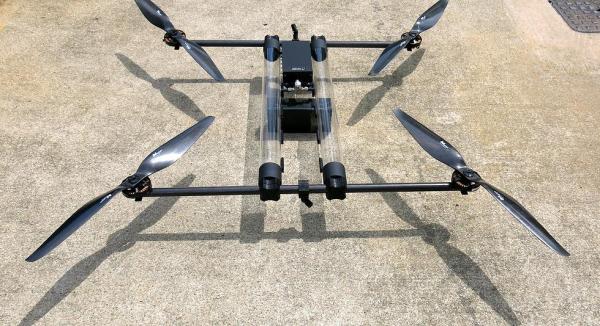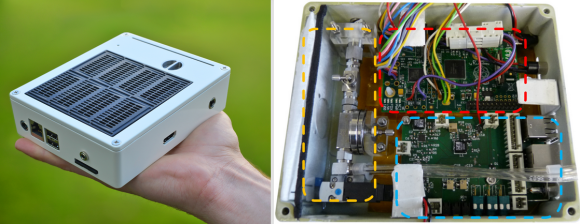Quadcopters are useful little flying machines. They can be used in all sorts of applications, from mapping, to inspecting long pipelines, to border surveillance, or simply for fun. They all have one thing in common, however – a relatively short battery life. Because quadcopters use brute force to churn through the air, they require a lot of energy. More energy for longer flights means more batteries. More batteries means more weight to carry, which requires even more energy. If you want longer flight times, something has to change. Or does it?
A small start-up company called Horizon Unmanned Systems based out of Singapore claims their quadcopter can fly for up to four hours on a single charge, or up to two and a half hours carrying a 2.2 pound load. They claim to be able to pull this off with a novel approach. First, they fill the hollow frame of the quadcopter with hydrogen gas. They use that gas to power a cute little miniaturized fuel cell LiPo battery hybrid gizmo. And that’s about it. The rest is just standard quadcopter stuff.
The secret to all of this is the miniaturized fuel cell, and how it works. Unfortunately, this is as close as we’re going to get (pdf) for a datasheet. Fuel cells are nifty devices that take hydrogen and oxygen and convert them into water, along with electricity. While that sounds simple, making one is not. And making a miniature one light enough for a quadcopter is down right hard.
How would you increase the flight time of quadcopters? Fuel cells are a great idea, but is this technology within the reach of the modern hacker? We’ve seen people make them from scraps out of a junkyard, but how would you miniaturize it and make it light enough to be used as a practical power supply for a quadcopter?
Thanks to [Joseph Rautenbach] for the tip!














